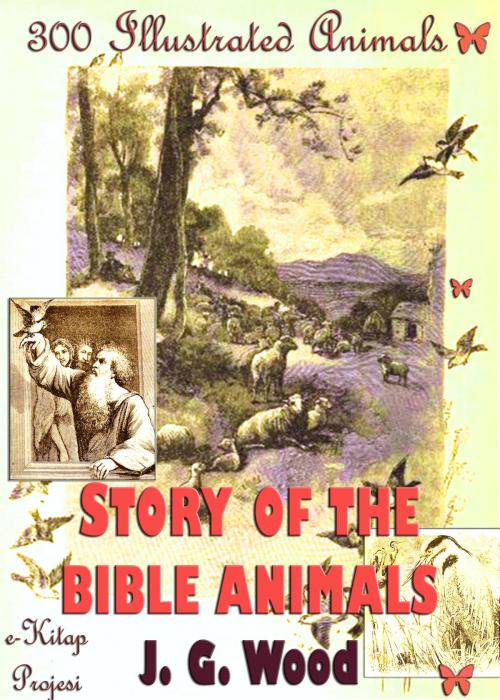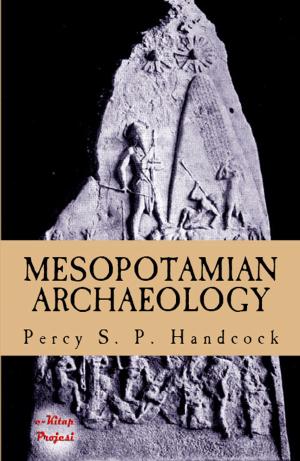Story of the Bible Animals
[300 Illustrated Animals]
Nonfiction, Religion & Spirituality, Bible & Bible Studies, Bibles, Other Bibles| Author: | J. G. Wood | ISBN: | 9786155564727 |
| Publisher: | eKitap Projesi | Publication: | April 8, 2015 |
| Imprint: | eKitap Projesi | Language: | English |
| Author: | J. G. Wood |
| ISBN: | 9786155564727 |
| Publisher: | eKitap Projesi |
| Publication: | April 8, 2015 |
| Imprint: | eKitap Projesi |
| Language: | English |
Owing to the different conditions of time, language, country, and race under which the various books of the Holy Scriptures were written, it is impossible that they should be rightly understood at the present day without some study of the customs and manners of Eastern peoples, as well as of the countries in which they lived.
The Oriental character of the scriptural writings causes them to abound with metaphors and symbols taken from the common life of the time.
They contain allusions to the trees, flowers, and herbage, the creeping things of the earth, the fishes of the sea, the birds of the air, and the beasts which abode with man or dwelt in the deserts and forests.
Unless, therefore, we understand these writings as those understood them for whom they were written, it is evident that we shall misinterpret instead of rightly comprehending them.
The field which is laid open to us is so large that only one department of Natural History—namely, Zoology—can be treated in this work, although it is illustrated by many references to other branches of Natural History, to the physical geography of Palestine, Egypt, and Syria, the race-character of the inhabitants, and historical parallels.
The importance of understanding the nature, habits, and uses of the animals which are constantly mentioned in the Bible, cannot be overrated as a means of elucidating the Scriptures, and without this knowledge we shall not only miss the point of innumerable passages of the Old and New Testaments, but the words of our Lord Himself will often be totally misinterpreted, or at least lose part of their significance.
The object of the present work is therefore, to take in its proper succession, every creature whose name is given in the Scriptures, and to supply so much of its history as will enable the reader to understand all the passages in which it is mentioned.
Author Biography:
Life and works:
Early life and ordination
Wood was born in London, son of surgeon John Freeman Wood and Juliana Lisetta, and educated at home, at Ashbourne grammar school and Merton College, Oxford (B.A., 1848, M.A., 1851); also at Christ Church, where he worked for some time in the anatomical museum under Sir Henry Acland. In 1852 he became curate of the parish of St Thomas the Martyr, Oxford, and in 1854 was ordained priest; he also took up the post of chaplain to the Boatmen's Floating Chapel at Oxford. Among other benefices which he held was for a time chaplain to St. Bartholomew's Hospital. In 1878 Wood settled in Upper Norwood, where he lived until his death.
Parson-naturalist:
In 1854, Wood gave up his curacy to devote himself to writing on natural history, becoming a well-known parson-naturalist of the Victorian era. However, he continued to take on priestly work, as in 1858 he accepted a readership at Christ Church, Newgate Street, and was assistant-chaplain to St Bartholomew's Hospital, London, from 1856 until 1862. Between 1868 and 1876 he was precentor to the Canterbury Diocesan Choral Union.
After 1876 he devoted himself to the production of books and lecturing on zoology, which he illustrated by drawing on a black-board or on large sheets of white paper with coloured crayons. These "sketch lectures," as he called them, were very popular, and made his name widely known both in Great Britain and in the United States.
Wood gave occasional lectures from 1856. In 1879, however, he began lecturing as a second profession, and continued to lecture steadily until 1888 in the United Kingdom and elsewhere. He delivered the Lowell Lectures in Boston, Massachusetts, in 1883-4.
Wood was a prolific and successful natural history writer, though rather as a populariser than as a scientist.
Owing to the different conditions of time, language, country, and race under which the various books of the Holy Scriptures were written, it is impossible that they should be rightly understood at the present day without some study of the customs and manners of Eastern peoples, as well as of the countries in which they lived.
The Oriental character of the scriptural writings causes them to abound with metaphors and symbols taken from the common life of the time.
They contain allusions to the trees, flowers, and herbage, the creeping things of the earth, the fishes of the sea, the birds of the air, and the beasts which abode with man or dwelt in the deserts and forests.
Unless, therefore, we understand these writings as those understood them for whom they were written, it is evident that we shall misinterpret instead of rightly comprehending them.
The field which is laid open to us is so large that only one department of Natural History—namely, Zoology—can be treated in this work, although it is illustrated by many references to other branches of Natural History, to the physical geography of Palestine, Egypt, and Syria, the race-character of the inhabitants, and historical parallels.
The importance of understanding the nature, habits, and uses of the animals which are constantly mentioned in the Bible, cannot be overrated as a means of elucidating the Scriptures, and without this knowledge we shall not only miss the point of innumerable passages of the Old and New Testaments, but the words of our Lord Himself will often be totally misinterpreted, or at least lose part of their significance.
The object of the present work is therefore, to take in its proper succession, every creature whose name is given in the Scriptures, and to supply so much of its history as will enable the reader to understand all the passages in which it is mentioned.
Author Biography:
Life and works:
Early life and ordination
Wood was born in London, son of surgeon John Freeman Wood and Juliana Lisetta, and educated at home, at Ashbourne grammar school and Merton College, Oxford (B.A., 1848, M.A., 1851); also at Christ Church, where he worked for some time in the anatomical museum under Sir Henry Acland. In 1852 he became curate of the parish of St Thomas the Martyr, Oxford, and in 1854 was ordained priest; he also took up the post of chaplain to the Boatmen's Floating Chapel at Oxford. Among other benefices which he held was for a time chaplain to St. Bartholomew's Hospital. In 1878 Wood settled in Upper Norwood, where he lived until his death.
Parson-naturalist:
In 1854, Wood gave up his curacy to devote himself to writing on natural history, becoming a well-known parson-naturalist of the Victorian era. However, he continued to take on priestly work, as in 1858 he accepted a readership at Christ Church, Newgate Street, and was assistant-chaplain to St Bartholomew's Hospital, London, from 1856 until 1862. Between 1868 and 1876 he was precentor to the Canterbury Diocesan Choral Union.
After 1876 he devoted himself to the production of books and lecturing on zoology, which he illustrated by drawing on a black-board or on large sheets of white paper with coloured crayons. These "sketch lectures," as he called them, were very popular, and made his name widely known both in Great Britain and in the United States.
Wood gave occasional lectures from 1856. In 1879, however, he began lecturing as a second profession, and continued to lecture steadily until 1888 in the United Kingdom and elsewhere. He delivered the Lowell Lectures in Boston, Massachusetts, in 1883-4.
Wood was a prolific and successful natural history writer, though rather as a populariser than as a scientist.















